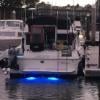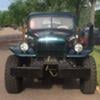Keeping direct sun/heat off the side with the refrigerator makes a BIG difference. I just returned from a wonderful father daughter trip in the Painted Hills, and the first night was brutal. I parked with the refrigerator facing west. My thermostat controlled fan kicked on about 1:30 PM and ran until 10:00.
I repositioned so the refer was shaded in the afternoon, and the fan never came one. That said, the refrigerator kept things wonderfully cold. The fan is very helpful!
I think that facing the fridge side of the camper away from the sun is the most important part. We set up on the lake with fridge on the north side. Even though we were only getting 3-4 hours of full sun on the panels the fridge and battery kept up way better. When we left the camper in the parking lot of another lake, because of the boat trailer and oneway situation, we were forced to park with the fridge facing SW. Even though we had sun all day on the panels, the all day sun on the fridge side was our demise. I'm looking into some kind of shade to deploy in these situations.
I store my collapsible grey water jug and hose in the side compartment were the fan is. I think this is limiting the circulation and also part of the problem. I will relocate these items.
Edited by Cpt Davenport, 24 July 2023 - 02:46 PM.

















